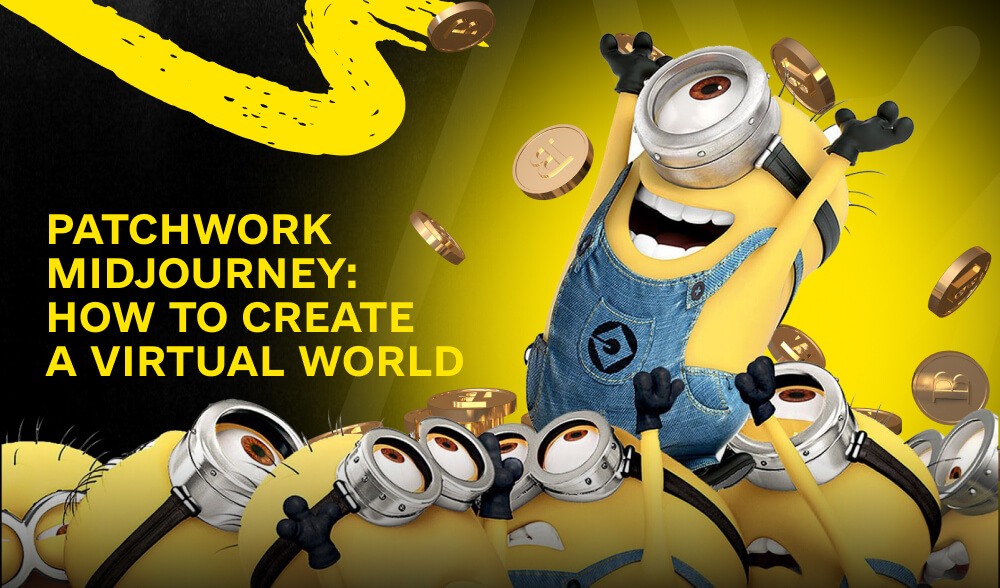Don't miss interesting news

Midjourney has launched Patchwork, a new experimental tool for creating virtual worlds. The service is currently available for free. It will be useful for game designers, marketers, writers, and creative teams to collaborate on projects. Read on to find out what Patchwork offers and how to use it.
Patchwork is an online whiteboard or a large interactive canvas that integrates the latest version of Midjourney (a generative AI that creates images based on a text description, i.e. a prompt).
Here are the main features of Patchwork:
Patchwork is ideal for the following professions:
Patchwork is a real find for creative people and teams who want to take their projects to the next level. Try it for yourself and you’ll realize how convenient and innovative it is.
You can access Patchwork through your Midjourney account – you don’t have to register separately. The main thing is that your account is linked to Google. In Midjourney, you can create a profile via Discord, but this method will not work for Patchwork. If you only have a Discord account, you need to link it to Google on the profile settings page.
There’s one caveat: Patchwork is currently in test mode, so some features, including authorization, may be unstable.
After logging in, you will be taken to the Patchwork Lobby, a kind of “waiting area” from where you can move on to the generated worlds. These worlds are created by Midjourney to inspire newcomers. To enter a world, just click on the portal. You can see what it looks like in the attached gif.
Next, you can create your own portal. To do this, click Portal in the left toolbar. Here you have two options: start creating in an existing world (if its author has allowed editing) by clicking “Link the world”, or create your own new world by clicking “Let’s go”. To do this, you need to enter a prompt – a description of what you expect the result to be. After that, choose a style (or several at once) – artificial intelligence offers 10 options to choose from.
When your world is ready, you can start generating. There are two sections in the left toolbar. In the Imagine block, you can create new objects:
The Tools section contains additional functions for working with the world. For example, you can add a note, add an image, create a new portal, go to your profile, save, upload, or share a link to your world.
To create any object, you need to follow a few simple steps:
Find the desired button in the “Imagine” section.
Write the name of the object and create a thumbnail.
Select the size and proportions of the future picture by clicking on the canvas.
Click “Paint” to start the generation process.
Choose the best result from four options or save all of them. If you don’t like what you see, you can delete it or untie it from the canvas so that it doesn’t affect the style of new objects.
The canvas allows you to move objects freely, scale and change the appearance of the space.
Patchwork has another cool feature: the context menu. It depends on what you’re working with: text or image. For example, you can:
You can also visualize the text! Just click on the 🎨 (“Paint”) icon.
As for images, the options are almost the same, but with some differences. For example, Paint doesn’t work directly, but you can select several objects and create refinements for the prompt from them. You can also create a style reference – there is a 🌈 for this.
Midjourney Patchwork is an online tool that is most convenient for storing generation boards right in the service. There you can easily share them via the link. But if you need to save the project locally, the “Save” button in the toolbar will help you. All objects and their relationships will be saved as a JSON file.
Patchwork now looks like a promising tool. Its collaboration functionality and ease of organizing objects on the canvas are particularly impressive. At the same time, the service is unstable: there are problems with access, both in Russia and in other countries. The developers are actively collecting feedback and suggestions to make the platform better.